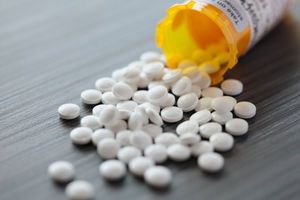Bristol-Myers-Squibb (BMS) purchased Celgene some months ago, much to the consternation of BMS’s biggest shareholder, who felt it was too big an acquisition, and also many Celgene shareholders, who felt the companies prospects were brighter than what was implied in the per share purchase price. That wasn’t the only controversy: The FTC also was expected not to like the overlap in their portfolios, particularly Celgene’s psoriasis drug Otezla and BMS’s up-and-coming psoriasis drug. To grease the wheels, BMS sold Otezla to Amgen for 13+ billion dollars, as reported in the last few days.

One interesting thing about Otezla is its mechanism of action as a PDE4 inhibitor. PDE4 represents a unique anti-inflammatory mechanism of action that shows a wide variety of benefits and a highly favorable safety profile. In fact, its SO good, it may actually make you feel better.
Yes, that’s right, PDE4 inhibitors have brain effects in addition to immune effects. A study a while back showed that PDE4 inhibitors, and specifically apremilast/Otezla, which has a better safety profile than the others, reduced uses of addictive substances like drugs of abuse. Specifically, Otezla may be a medication for alcohol addiction. Go figure. Repurposing for addiction is on the horizon.
The mechanism appears to involve pathways in mood stabilization. So, in addition to clearing up your skin, you are more chill and less stressed. Wait, maybe THAT’s how it clears up you skin?! Well, is it significantly more expressed in immune cells/the skin or in the brain areas associated with mood? Well, lets see if we can settle this: There are four PDE4 enzymes (A, B, C and D). Which ones are expressed in the brain and which are expressed in skin/immune cells? That should tell us where the site of action is: a) brain, followed by peace, followed by skin clearance, or b) skin clearance, followed by calm. CLICK! There, I’m done! Using GeneCentrix’s Target Profiler, we just found out with two clicks that one of the four PDE4s is significantly (as in statistics, as in p-value) expressed in immune cells, while the other three are not, and two are expressed in a brain tissue associated with mood. Try it for yourself!






